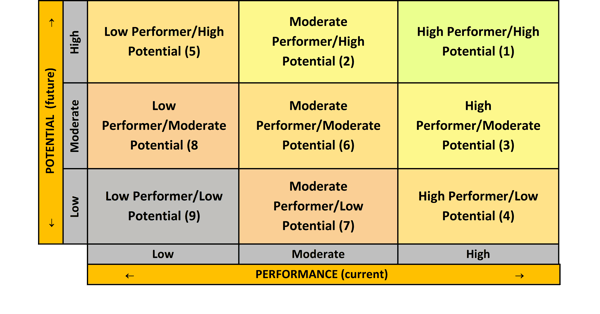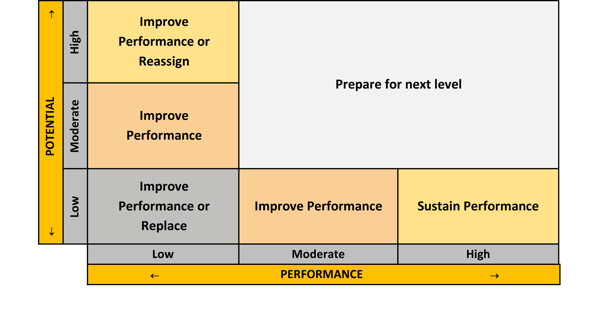In our last blog, To Restructure of Not to Restructure?...That is the Question, we discussed the need to evaluate a company's specific needs before making the decision to restructure, as it is not always the right fit for everyone. As part of our partnerships with organizations our advisors continuously look to assist business leaders with effective talent evaluation and development in support of performance management practices and succession planning. This week we focus on a well-known talent assessment tool “The 9-box Grid” which can be facilitated to help our clients solve some of their most pressing talent challenges.
An excellent tool to help business leaders critically think about their workforce.
The 9-box grid is designed to help business leaders in effective talent evaluation and development by quickly developing consensus about their employees’ performance and future potential. Using a 3x3 grid, the 9-box model is an excellent tool to help business leaders critically think about their workforce from a current performance vs future potential viewpoint. From a performance management and appraisal standpoint, this simple 9-box grid gives business leaders a quick visual representation of their workforce and helps analyze a department’s or entire organization’s readiness to meet current and future demands. From this, professional development plans can be created to performance manage low potential, low performance employees and stretch and challenge high potential, high performance employees in preparation for the next level.

Organizations are finding greater and greater value in using this tool in succession planning.
With older generations leaving the workforce and younger ones joining, organizations are finding greater and greater value in using this tool in succession planning to support managing and planning for a transitioning workforce. With this focus, business leaders are encouraged to think about the workforce from a current leadership vs. potential leadership standpoint. From here coaching, training and mentoring programs can be developed and established, using current leaders to mentor and train potential future leaders, and ensure knowledge and skills do not leave the organization with the departure of senior managers and leaders.

Ensure effective allocation of organizational resources.
To ensure effective allocation of organizational resources to talent acquisition and management initiatives this simple exercise, if facilitated and executed well, can engage an entire workforce and help identify if training or change is needed in someone’s job roles or responsibilities. Business leaders tend to want to allocate resources to continue to develop high-potential employees if performance levels are moderate, however, it may not be valuable for either party to continue in a role if there is low potential and low performance. It is important also to note that low potential could be due to a lack of engagement or motivation, so if coupled with moderate performance coaching, it could help reengage and motivate an employee to have a greater impact on the organization than previously demonstrated.
Engaging a workforce and producing truly amazing results.
If used effectively with well mediated discussion and analysis, we have found that business leaders and entire organizations benefit greatly from completing an exercise in effective talent evaluation and development. If executed poorly, it can potentially have unintended consequences. However, by investing a reasonably short amount of time to this process excellent performance management and succession planning can ensue, engaging a workforce and producing truly amazing results for future years to come.
%20Full%20Color.png?width=250&name=Aliniti%20plus%20Tagline%20(Registered)%20Full%20Color.png)